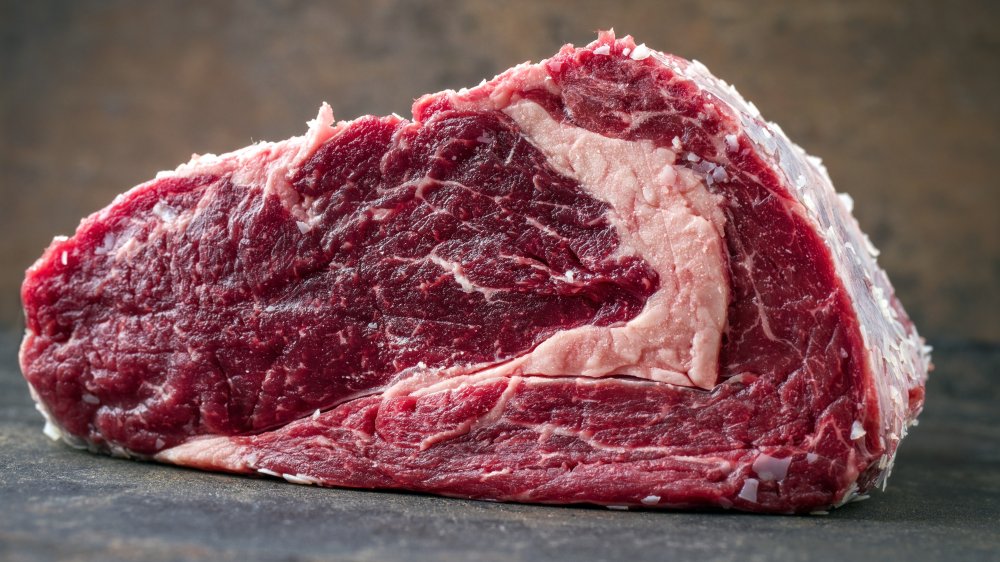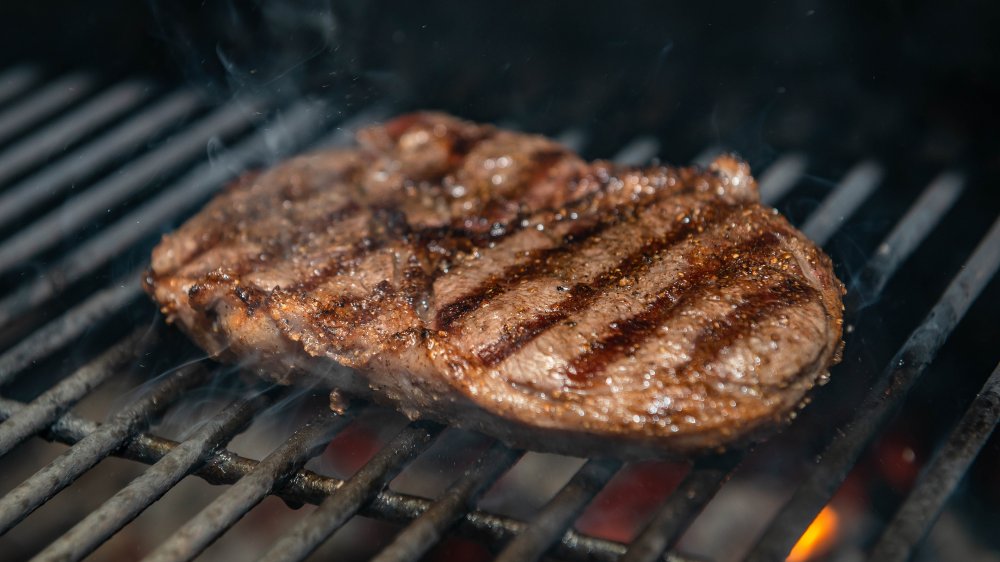You've Been Trimming The Fat Off Your Steak All Wrong
Steak is one of those prized meals people want to enjoy and savor. Biting into a juicy tender filet or cutting into a flawlessly seasoned rib eye that has the smokey char flavor, and the perfect cross-hatch marks of a grilled piece of meat can be utter nirvana for carnivores. It just doesn't get any better. What gives steak all that flavor? Aaron Franklin of the famous Franklin BBQ in Austin, TX told Christopher Kimball's Milk Street that different factors, including how the cattle were raised and fed and the age of the animal can affect the flavor. Perhaps most importantly, he said, "'Fat is flavor' is to meat as 'location, location, location' is to real estate."
Franklin also emphasizes that the marbling – the little white vein-like lines of fat that run throughout your steak – can render flavor. But what about the big slab of fat that sometimes encompasses the actual meat? That brings us to the question that certainly has two varying philosophies: how and when do you trim the fat from your steak? The answer may surprise you. In fact, you might find you've been trimming the fat from your steak all wrong.
Trim the fat from your steak before or after you grill?
Eat This, Not That sits in the camp that says don't trim the fat before you grill. Why? Because they say that while that strip of fat that borders your steak doesn't look very appealing, it does add flavor to your meat and can enhance each bite you put in your mouth. However, Spruce Eats is at the other end of the fat trimming spectrum and suggests cutting off a fair amount of that extraneous fat before you fire up the grill. Their logic: fat shrinks much quicker than the meat cooks and can cause loss of juices that make your steak tender and mouth-watering. Trimming the fat can help the cooking process and also ensure too much grease doesn't drip down into the grates, causing intense fire and heat.
So who's right? The blog Steak Perfection says it depends on the situation, noting that cooking a steak is not a one-size-fits-all approach. The writer cautions that when grilling steaks at high temperatures, it should not have a layer of fat because it will just burn and make your steak taste awful and therefore should be trimmed before grilling. However, the blogger also notes that if you are going to cook your steak at a low temperature – think 350 degrees – you want to keep that fatty strip because the fat will melt when cooked on a cooler grill, producing a tasty and juicy piece of meat.

